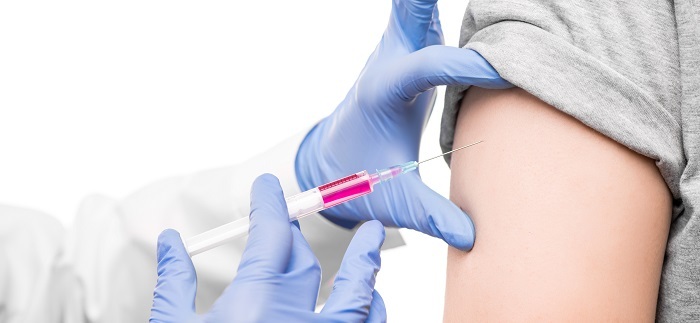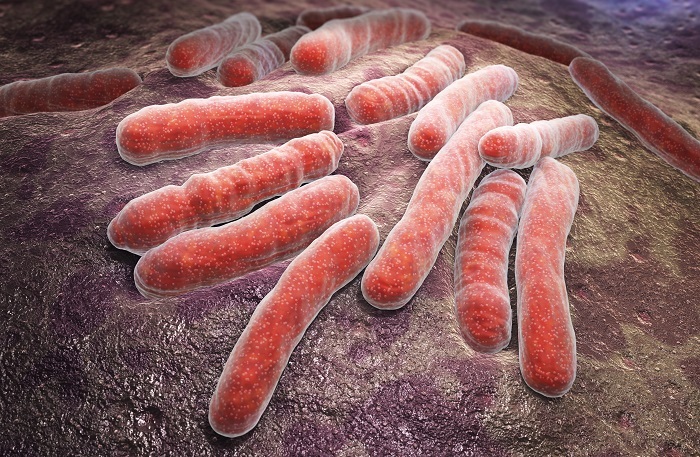
 Data Structure
Data Structure Networking
Networking RDBMS
RDBMS Operating System
Operating System Java
Java MS Excel
MS Excel iOS
iOS HTML
HTML CSS
CSS Android
Android Python
Python C Programming
C Programming C++
C++ C#
C# MongoDB
MongoDB MySQL
MySQL Javascript
Javascript PHP
PHP
- Selected Reading
- UPSC IAS Exams Notes
- Developer's Best Practices
- Questions and Answers
- Effective Resume Writing
- HR Interview Questions
- Computer Glossary
- Who is Who
What is the full form of BCG ?
Definition & History
Bacille Calmette-Guérin or BCG is a vaccine given for tuberculosis disease. But, it is mainly administered to newborns and small children right after their birth.
BCG vaccine provides an immunity shield that partially provides protection to infants and young children from the deadly disease tuberculosis. As the vaccine provides the utmost protection from the severity of the infection it is applicable in different countries where the predominance of tuberculosis is very high.

In 1921, Sir Benjamin Weill-Halle and Raymond Turpin, both scientists duo conducted oral administration of the first BCG vaccine to all the neonates who lost their mothers with tuberculosis in Paris. The administration of the oral vaccines was successful and not a single baby experienced any side effects and also did not develop the disease over time, even though they got maternal exposure. After this successful vaccine drive around 200+ Parsi children were successfully vaccinated against tuberculosis which led to large-scale production of the vaccine at a premier institute named Pasteur Institute.
The League of Nations gave a declaration that the BCG vaccine was safe and such programs were continued till 1930 as per their directions. But a mishap took place in Lubeck, a place in Germany where 72 neonates died after receiving the BCG vaccine, and the incident is popularly known as the Lübeck disaster. But it was mentioned at a later point in time that their deaths were due to the contamination of some other vaccine preparations with a virulent strain of M. tuberculosis. This incident turned out to be a major setback and killed the enthusiasm amongst the mothers of all newborn babies. But the resurrection of Tuberculosis during World War II led to the activation of the BCG vaccination drive once again and regained public trust.
Composition
BCG is generally made from an attenuated strain or a live strain of bovine tuberculosis bacillus, Mycobacterium bovis, that has lost its pathogenicity to establish the disease in humans. As the living bacilli have the ability to make use of available nutrients, they cannot adapt well to human blood and cannot trigger the disease when inculcated into a human host. But still, they are familiar with their wild ancestors which enables them to provide immunity to a greater extent against human tuberculosis.

Fig 1:- Mycobacterium bovis
Mycobacterium bovis is a very slow-growing aerobic bacterium and the causal agent of tuberculosis or bovine TB
Mechanism of Action
The mode of action of BCG follows the following steps ?
Mycobacterium tuberculosis or MTB is considered the etiological agent of TB, which is transferred via respiratory droplets of the infected patients. In 95% of the infected persons, the bacterium is present as a host immune response in the form of latent TB infection or LTBI.
Bacillus Calmette-Guérin is the only vaccine that can fight the disease with a protection guarantee of 10 years along with some additional residual vaccines that boost the effectiveness of the vaccine up to 20-25 years.
The vaccine can only provide protection for different types of childhood TB but cannot reactivate the main source of adult pulmonary disease or mode of transmission of MTB. WHO(World Health Organisation) has recommended BCG must be administered as an universal single dose to all newborn babies right after their birth as tuberculosis is highly endemic.
The evidence says that BCG also prevents leprosy, which is a neurological disorder of the skin caused by Mycobacterium leprae. A lot of cases have been reported to date for this disease. The vaccine is also effective against different mycobacterial infections and one of them is Buruli ulcer disease.
Development & Production
There are different developmental protocols and steps that are followed for the development of BCG vaccination ?
Protocol says production of the BCG vaccine must take place in a location, which will be a completely separate place from other vaccine production using some specialized equipment.
Production areas should be properly ventilated so that there is minimum hazard emission. Entry of any kind of animal should be strictly prohibited.
Quality control of vaccines requires aseptic culture production and hence the place must be free of any sort of microbial contamination. Proper sterilisation is very important while preparing cultures.
The preparation areas of the vaccine are designed in such a way that all the cultures for BCG vaccines get protection from direct sunlight and ultraviolet radiation.
BCG vaccine production should be done by a team of healthy persons who normally get less exposure to different types of infections or microorganisms. Besides, they should avoid working with virulent strains of M. tuberculosis and must not get exposed to the known risk factors of tuberculosis infection.
Side Effects & Risks
BCG immunization delivers some pain and discomfort at the injection site. Some of the important side effects are as follows ?
The vaccination may give rise to keloids which are swollen raised scars. The penetration of the injection to the deltoid muscle reduces the chances of any complication post-vaccination.
BCG vaccine should be administered intradermally and mistakenly if it is given subcutaneously chances of infection remain high and proliferation can take place in the regional lymph nodes, leading to pus generation from the place of penetration and nonsuppurative lymphadenitis. Conservative management strategy can be useful for controlling nonsuppurative lymphadenitis. Needle aspiration is another method to control pus generation.
Rarely breast and gluteal ulceration can take place due to hematogenous infection when spreading takes place through blood or via lymph angiomatous spread (lymph).
Conclusion
The invention of BCG about a century back paved the way for preventing the spread of tuberculosis in the Human population. Besides its contribution to Tuberculosis and Urinary bladder cancer, the BCG vaccine plays a crucial role in different factors and their respective mechanisms for causing various other diseases. Phase IV trials of BCG vaccination are currently explored to eventually measure the role of the specific factors that provide protection against COVID-19 infection
FAQs
Q1. What is protective efficacy?
Ans. Protective efficacy is a measure or a survey done to note down the proportion of populations who have not received the vaccination. If the efficacy result shows 80% protection it indicates 4 out of 5 individuals are protected. Efficacy for maximum vaccines shows almost 95% protection coverage. Therefore it can be concluded BCG is a comparatively weak protective vaccine.
Q2. Is the policy of BCG vaccination prevalent in other parts of the World?
Ans. The policy is not prevalent equally in all parts of the World due to variations in the trial process. Most countries administer BCG at the time of birth to provide protection in the newborn for providing protection against Military Tuberculosis or Tuberculous Meningitis.
Q3. What is Buruli ulcer disease?
Ans. The causal agent of Buruli ulcer is Mycobacterium which belongs to the family of bacteria and is popular for causing Tuberculosis and Leprosy. It is a chronic devitalizing disease that predominantly affects the skin and bones.

